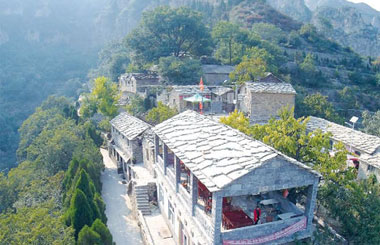Iron arteries pump new life
Updated: 2016-06-01 08:17
By Xin Dingding in Beijing and Liu Kun in Wuhan(China Daily)
|
|||||||||
As the arteries of China's high-speed railway network have continued to grow over the past eight years, they have also delivered efficient and punctual service at highly affordable prices, and have greatly changed the way Chinese regard getting about the country.
The first high-speed railway line, 120 km long, between Beijing and Tianjin, opened in 2008, and by the end of last year another 19,000 km of high-speed rail lines had been laid and put into service. That equates to an average of 2,700 km of new lines each year - about the total length of the high-speed rail lines in Japan.
Indeed, China now has the world's longest high-speed rail network, and it accounts for 60 percent of the world's total, Sheng Guangzu, general manager of China Railway Corp, said in January.
One change this sprawling network has wrought is people going on sightseeing trips far away from home over three-day holidays, or attending weddings far away over the weekend, which in the past would have been regarded as impractical.
Zhou's son, her only child, moved to Wuhan several years ago, and she says she had thought it would be difficult for her to see the family that often or for her to take care of her grandson. She also had her own parents to look after in Yichang.
"If I helped them with the baby in Wuhan, I could not take care of my parents in Yichang. If I brought the baby back to Yichang he would need to go to Wuhan for vaccine shots from time to time, and that was impossible without good transport."
But that has now changed, she says. Her second grandchild, born last year, now lives with her in Yichang. "When the baby needs vaccine shots and when her parents miss her I hop on the train and head to Wuhan."
The fast rail transport network is also having a significant impact on the way the country does business. Inland cities that had little appeal to investors because of a paucity of good transport links have now become attractive. Particularly since the central government has called for economic restructuring and industrial upgrading, inland cities linked to the national high-speed rail network have become preferred destinations for traditional industries moving their operations from coastal areas.
One example is Chenzhou in Hunan province, a city that used to rely heavily on mining. The city is on the border of Hunan and Guangdong provinces, but is closer to Guangzhou, the latter's capital and the country's economic engine, than to other cities in Hunan. However, until 2009 the fastest train from Chenzhou to Guangzhou took six hours. This acted as a deadweight on Chenzhou whenever it sought investment, and local officials in charge of attracting investment were often thwarted as they competed with cities with airports or with highway access.
That all changed in 2009 when the Wuhan-Guangzhou high-speed railway opened, and suddenly Chenzhou found itself just 90 minutes away. That reduction in travel time and costs has prompted a number of companies to set up production centers in Chenzhou, including Royal Philips NV and Delta Group. In 2014 the city shot up in provincial rankings to be behind only the capital, Changsha, in its use of foreign capital, media reported.
Experts say there are many other small cities in China's western and central provinces and regions that can benefit from the sprawling high-speed railway network as Chenzhou has.
Liu Bin, a researcher at the comprehensive transport institute at the National Development and Research Commission, says the high-speed railways can help make inland areas more competitive in raw materials and manufacturing.
The Government Work Report that Premier Li Keqiang delivered in March said the high-speed railway network will be 30,000 km long by the end of 2020, linking 80 percent of major cities nationwide. It means 11,000 km of high-speed railways will have been laid out in five years, or 2,200 km a year on average.
Wang Yanfei contributed to this story.
Related Stories
CRRC unveils China's first high-tech monorail train powered by magnet motors 2016-05-30 07:57
Faster "New Silk Route" train leaves Urumqi 2016-05-27 08:55
Dunhuang-Beijing train initiates new style 2016-05-25 16:30
Guiyang-Beijing bullet train with sleepers launched 2016-05-23 17:25
Today's Top News
EIB and AIIB to strengthen cooperation
Some 13,000 migrants saved, over 700 dead
Economists urge go-slow on EU's anti-dumping
Chinese investors eye European soccer goal
Rescue vessel eyed for the Nansha Islands
Steeled for change
EU has to cope with outcome of British referendum
Four Chinese banks among world's 10 largest
Hot Topics
Lunar probe , China growth forecasts, Emission rules get tougher, China seen through 'colored lens', International board,
Editor's Picks

|

|

|

|

|

|







